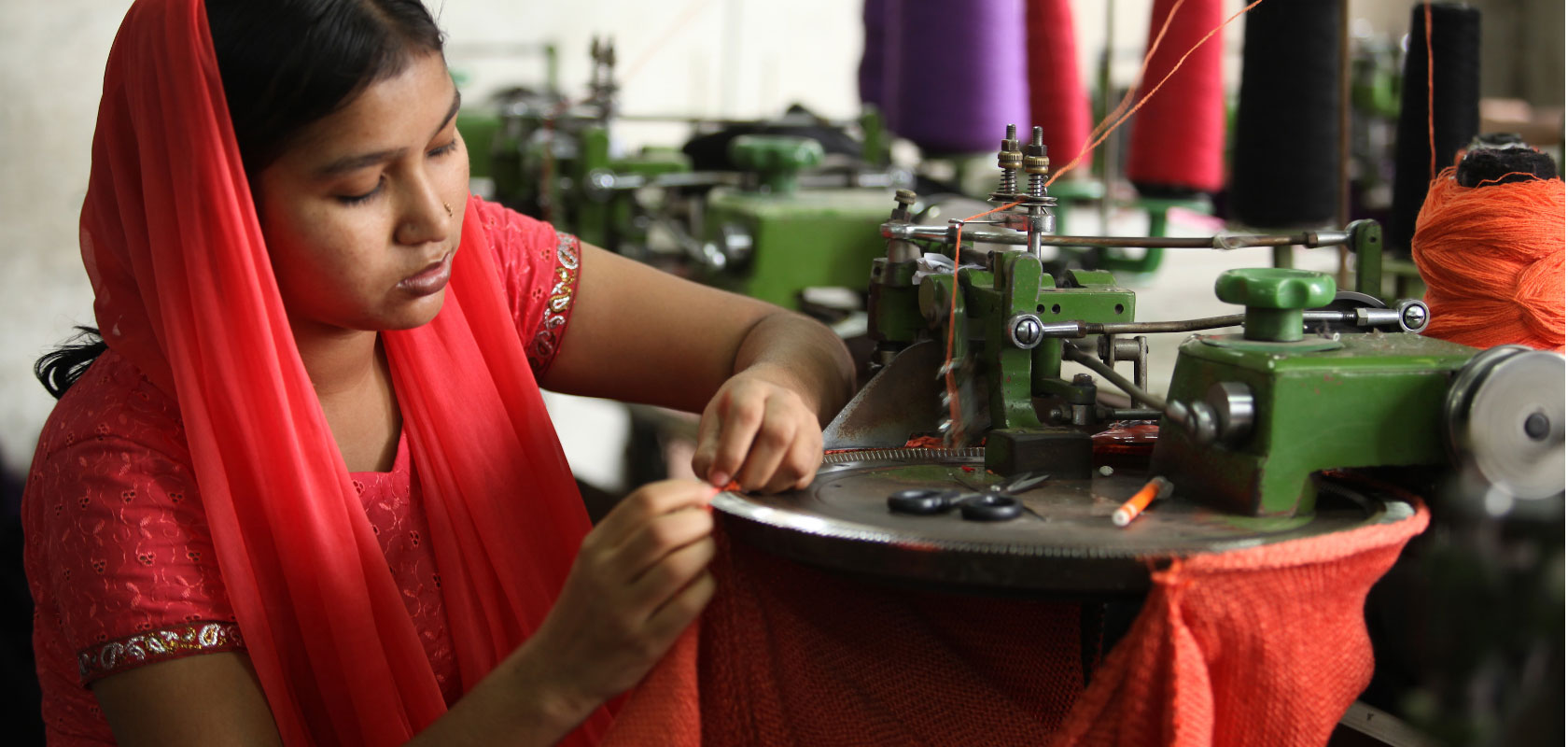The textile and clothing industries provide the single source of growth in Bangladesh’s rapidly developing economy. Exports of textiles and garments are the principal source of foreign exchange earnings.
By 2002 exports of textiles, clothing, and ready-made garments (RMG) accounted for 77% of Bangladesh’s total merchandise exports. In 1972, the World Bank approximated the gross domestic product (GDP) of Bangladesh at USD 6.29 billion, in 2014, the GDP stood at USD 173.82 billion, growing by almost 27 times in a matter of four decades. Bangladesh’s exports industry alone comprised USD 31.2 billion in FY 2014-15, 81.69% of which was made up by ready-made garments.
Bangladesh is second only to China, the world’s second-largest apparel exporter of western brands. 60% of the export contracts of western brands are with European buyers and about forty percent with American buyers. Only 5% of textile factories are owned by foreign investors, with most of the production being controlled by local investors. In 2012 the textile industry accounted for 45% of all industrial employment in the country yet only contributed 5% of the Bangladesh’s total national income.
Currently, Textiles contribution in the GDP is over 12%. 85%-90% knit and 40% Fabrics demand of Export Oriented RMG met by Primary Textile Sector (PTS).
Number of Mills: 1459
Yarn Manufacturing Mills: 424
- Synthetic Spinning Mills: 17
- Acrylic Spinning Mills: 08
Installed Capacity: 11.65 Million
- Spindles: 0.257 Million
- Rotors
Annual Yarn Spinning Capacity: 2410 Million Kgs
Fabric Manufacturing Mills: 794
- Denim: 30
- Home Textile: 22
Installed Capacity: 51000
- Shuttle-less Loom & Shuttle Loom:
Annual Woven Fabric Manufacturing Capacity: 3580 Million Mtrs
Dyeing-Printing-Finishing Mills: 241
(Textile Product Processors):
Annual Fabric Processing Capacity: 2795 Million Mtrs
- Woven Dyeing 1920 Million Mtrs
- Yarn Dyeing 315 Million Kgs
- Knit Dyeing 560 Million Kgs
RAW-MATERIAL REQUIREMENTS:
- Raw-Cotton: 10.50 Million bales, if 100% capacity is utilized (480 lbs each bale)
- Raw Cotton Import 2016: 6.32 Million Bales (App)
- Cotton Import 2015-16 (June-July): 1,375,257 Ton
- Polyester Staple Fibre 2016: 80000 Ton
Viscose Staple Fibre 2016: 30000 Ton
Investment in the Primary Textile Sector: over 4.5 billion US$.
- Value addition in knit & woven RMG are over 70% & 35% respectively.
- Textile sector contributes more than 12% in GDP.
- Over 81% of the export earning comes from Textiles & Textile related products.
- Around 90% yarn demand for knit RMG & 35-40% yarn demand for woven RMG are met by Primary Textile Sector (PTS).
- Local fabric demand & the yarn demand for handloom are also met by Primary Textile Sector (PTS).
Contribution of textiles:
Backward & Forward linkage industries provide employment for more than 5 million people where 80% are female.
PTS industries producing around 1200 MW power through Captive Generator.
Generate huge cliental base for Banking, Insurance, Shipping, Transport, Hotel, Cosmetics, and Toiletries & related economic activities

Home Textiles are:
- Electric blankets
- Travelling rugs, of wool or fine animal hair
- Synthetic fibers
- Bed, table, toilet and kitchen linens
- Textile knitted or crocheted materials
- Bed linen, of cotton, printed, not knitted
- Table linen, of cotton, not knitted
- Linen Of Cotton, Nes
- Curtains, drapes & interior blinds
- Bedspreads of textile materials
- Furnishing articles nes, of textile materials
- Sacks And Bags, Used For Packing Goods
- Tents & camping goods, tarpaulins, sails for boats, etc
- Tarpaulins, awnings and sunblinds, of synthetic fibers
- Floor-cloths, dish-cloths, dusters & similar cleaning cloths, being made up textile materials







